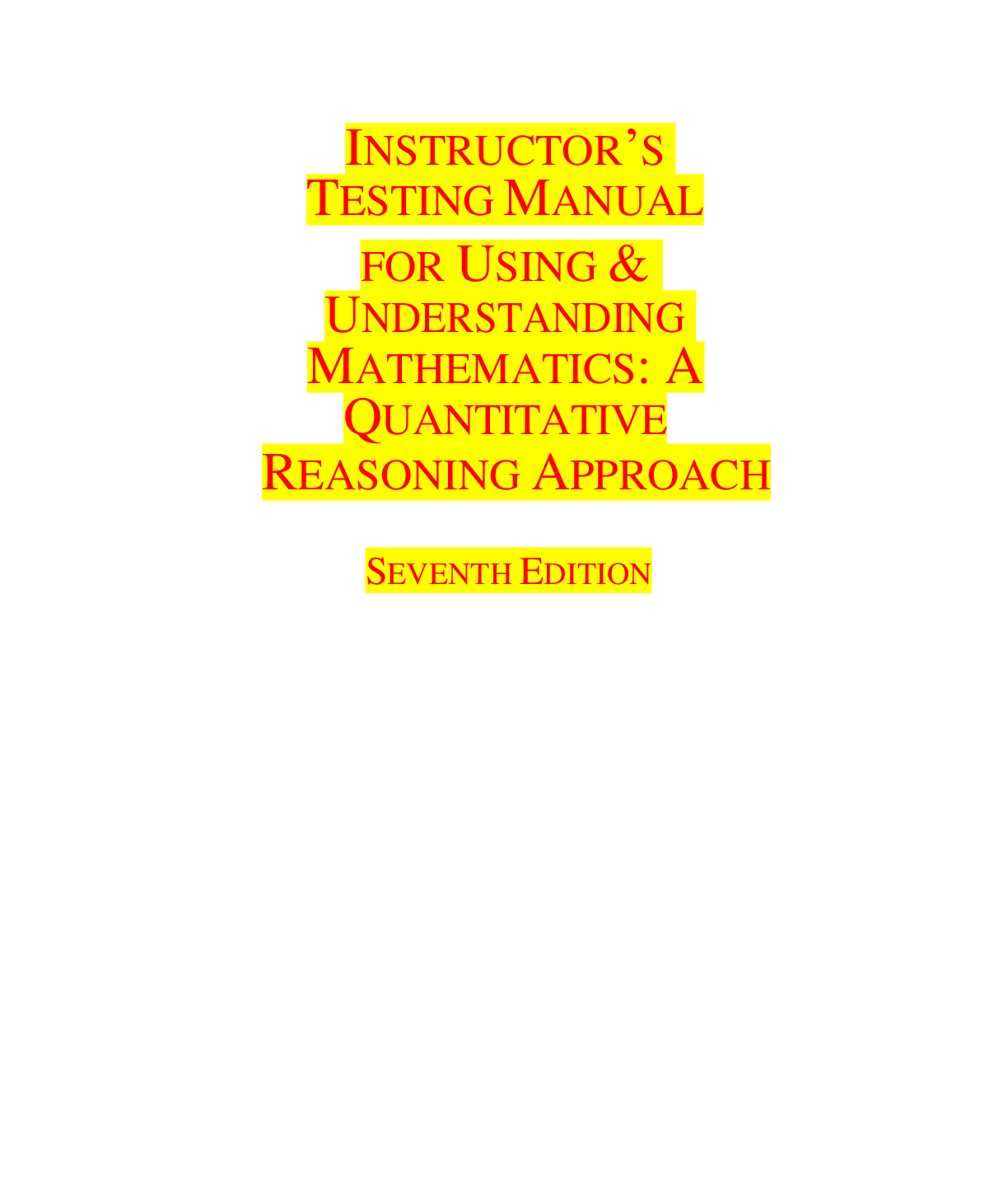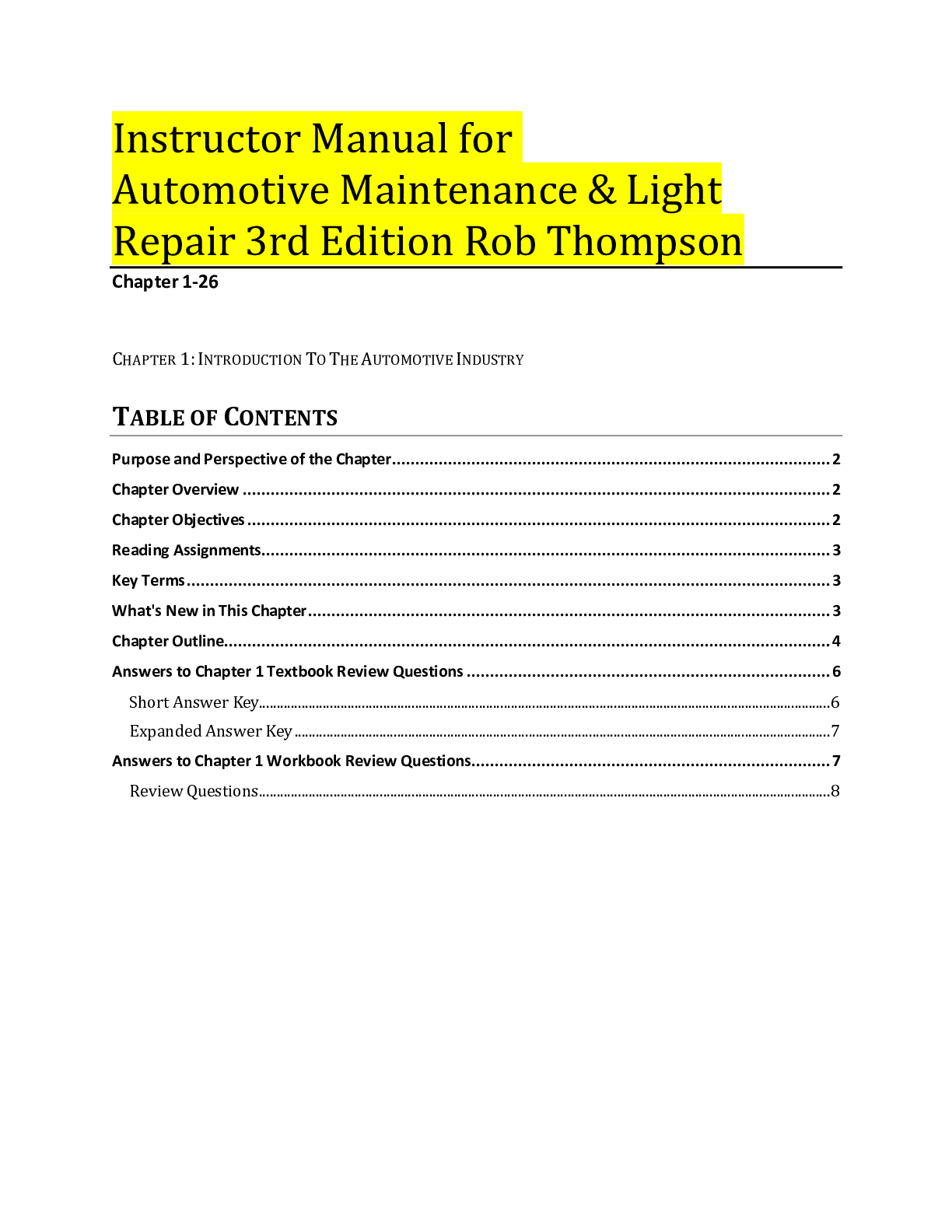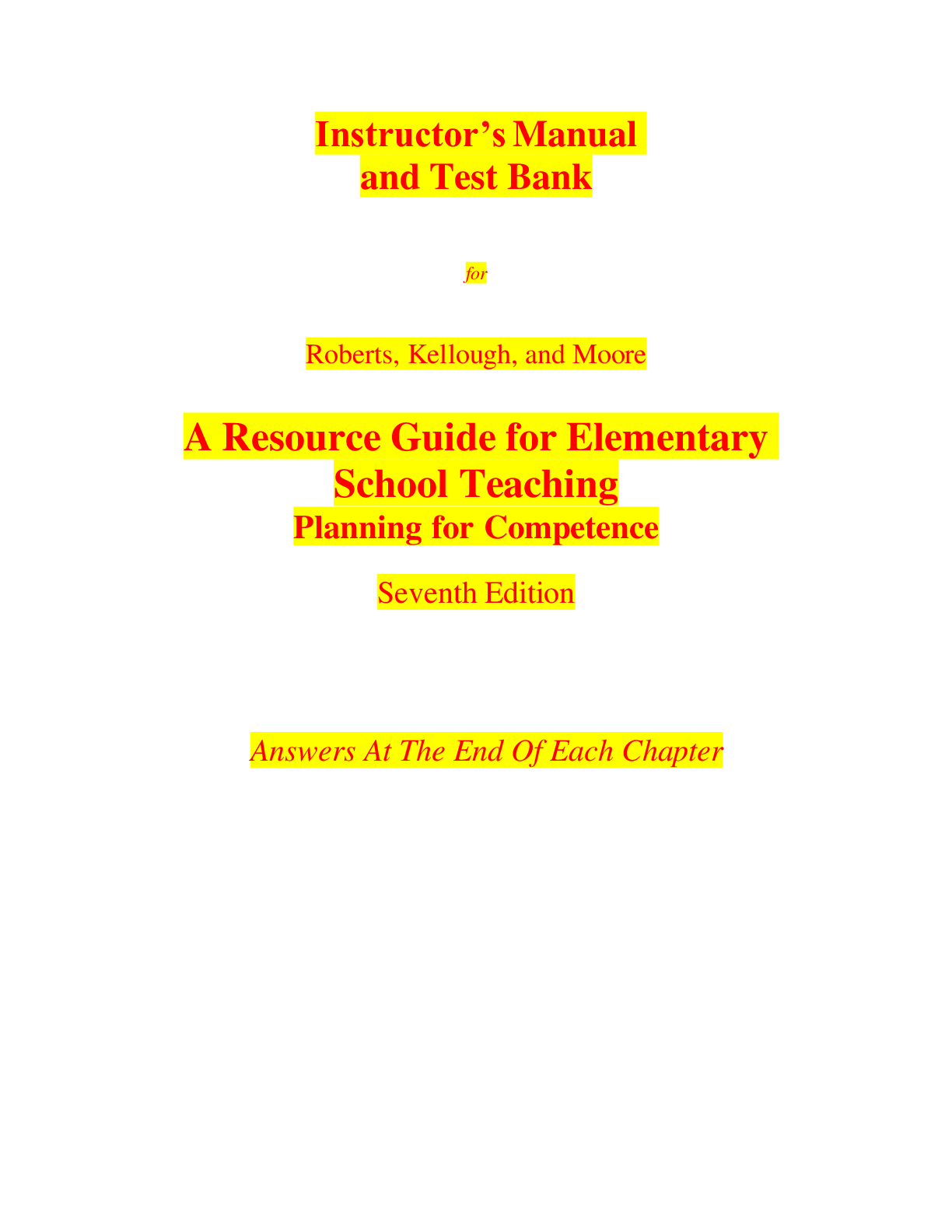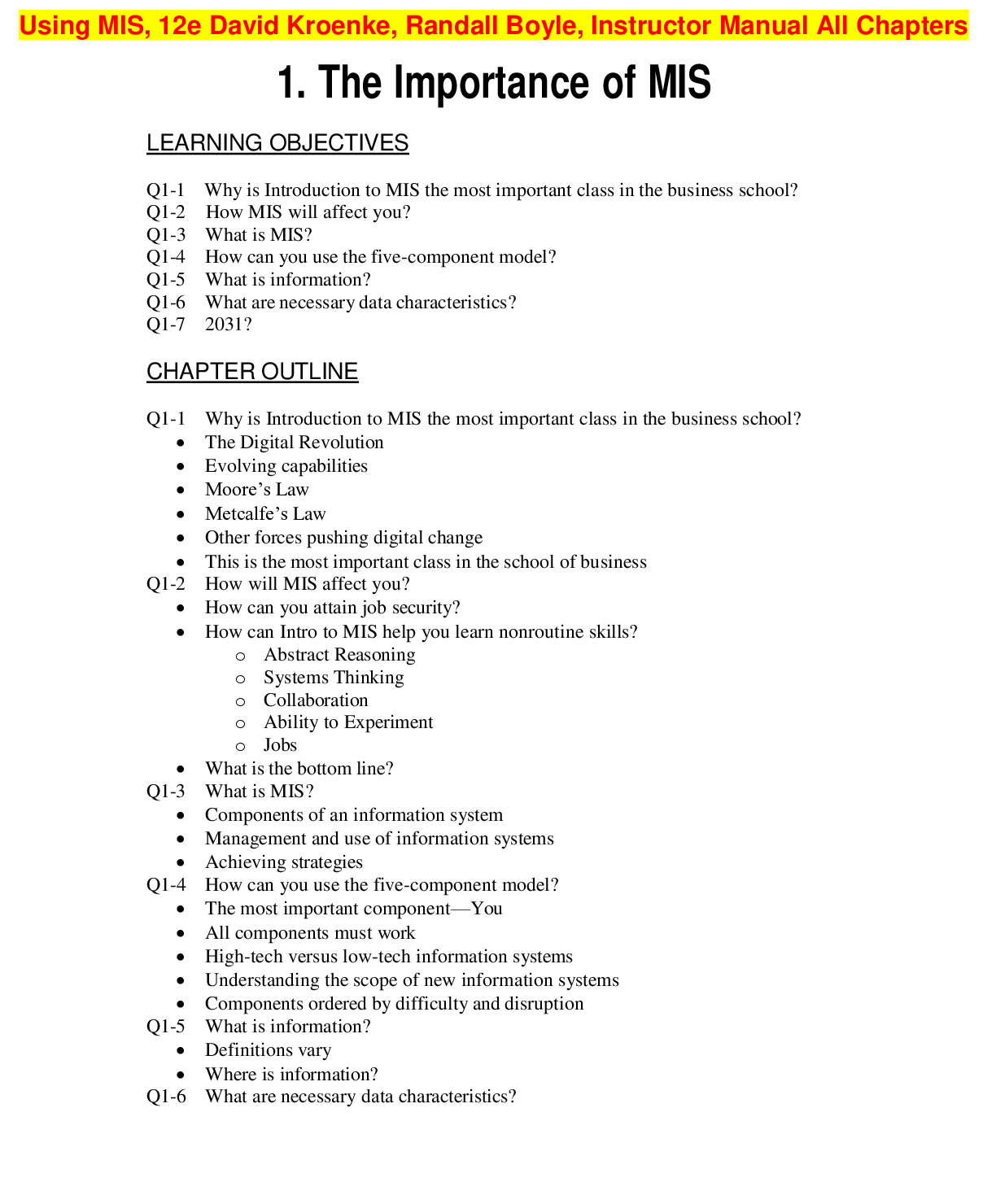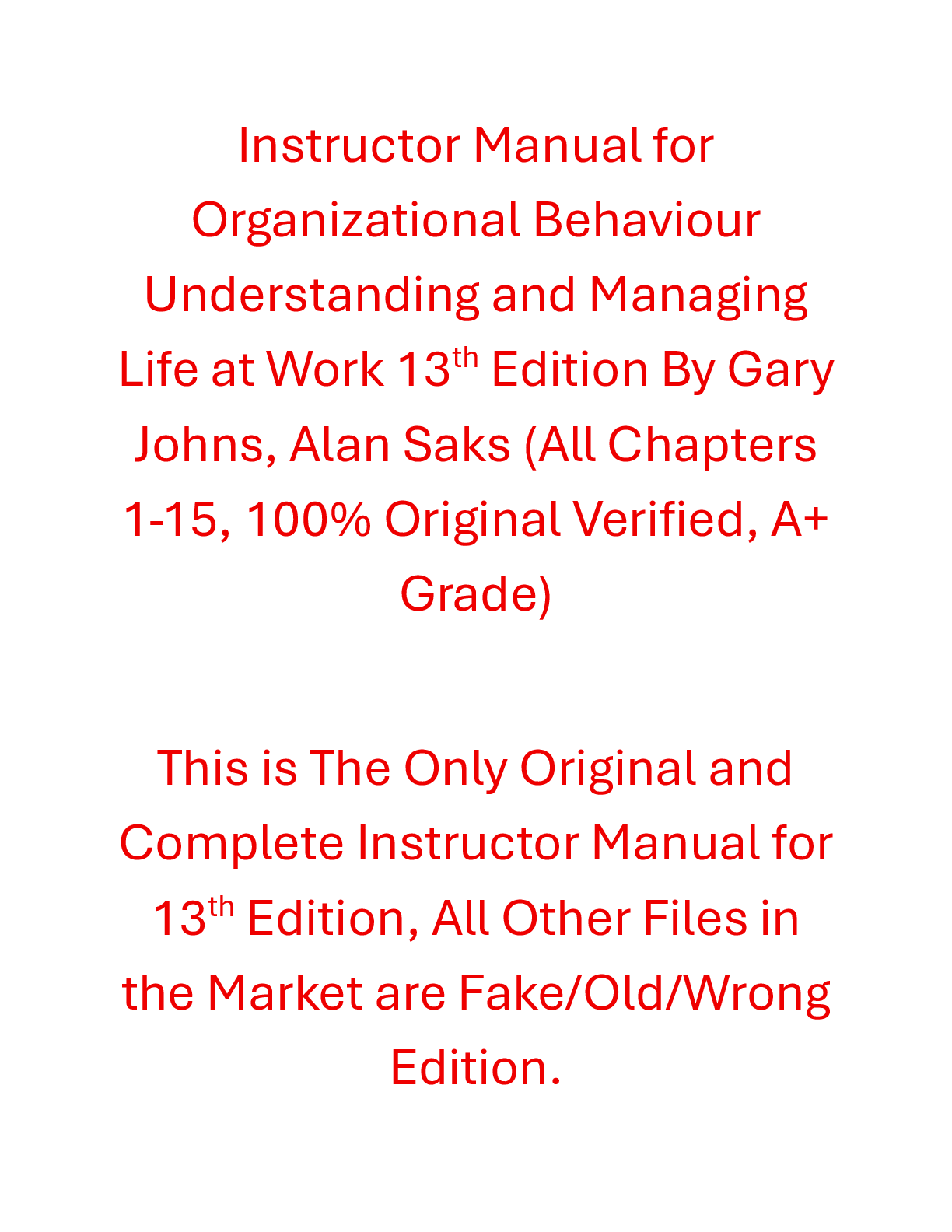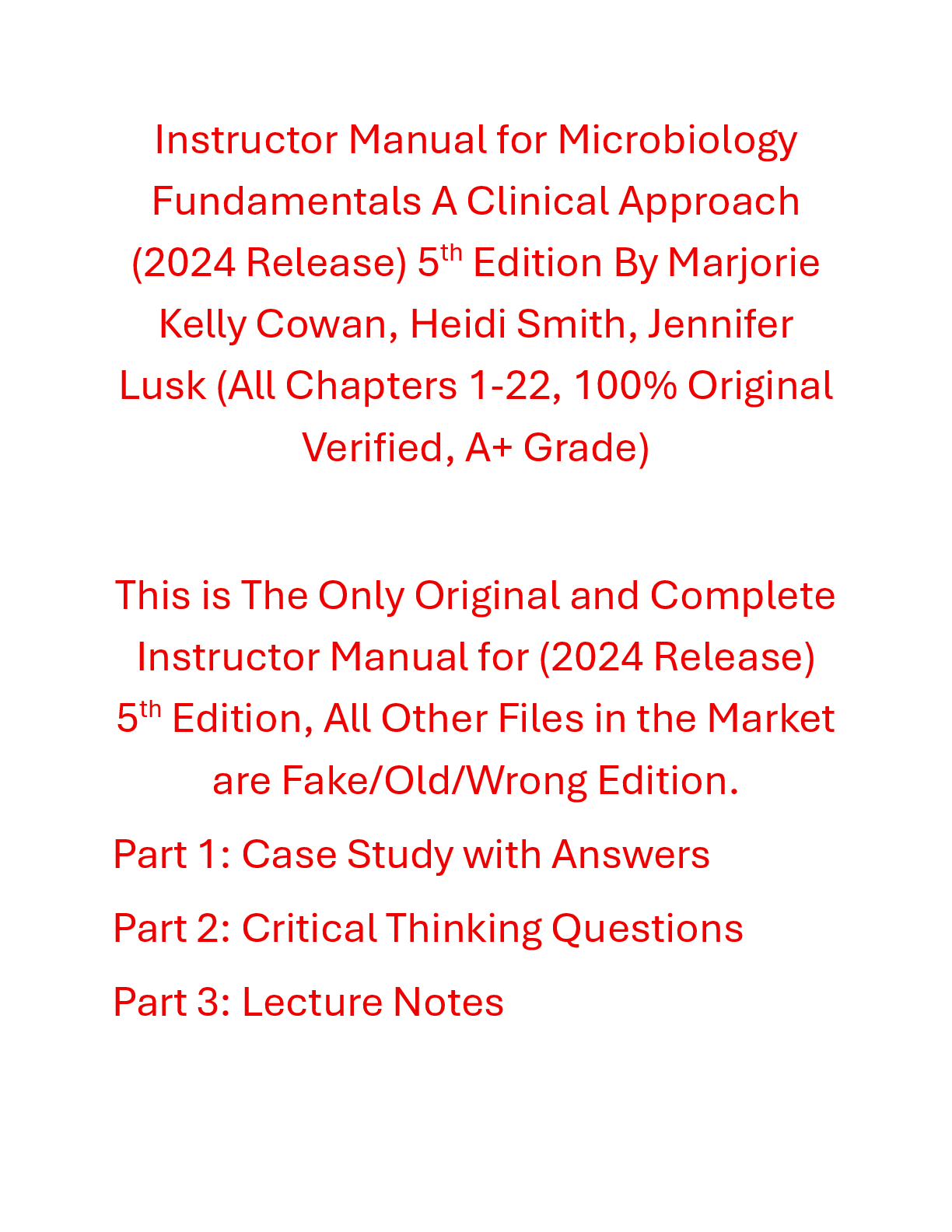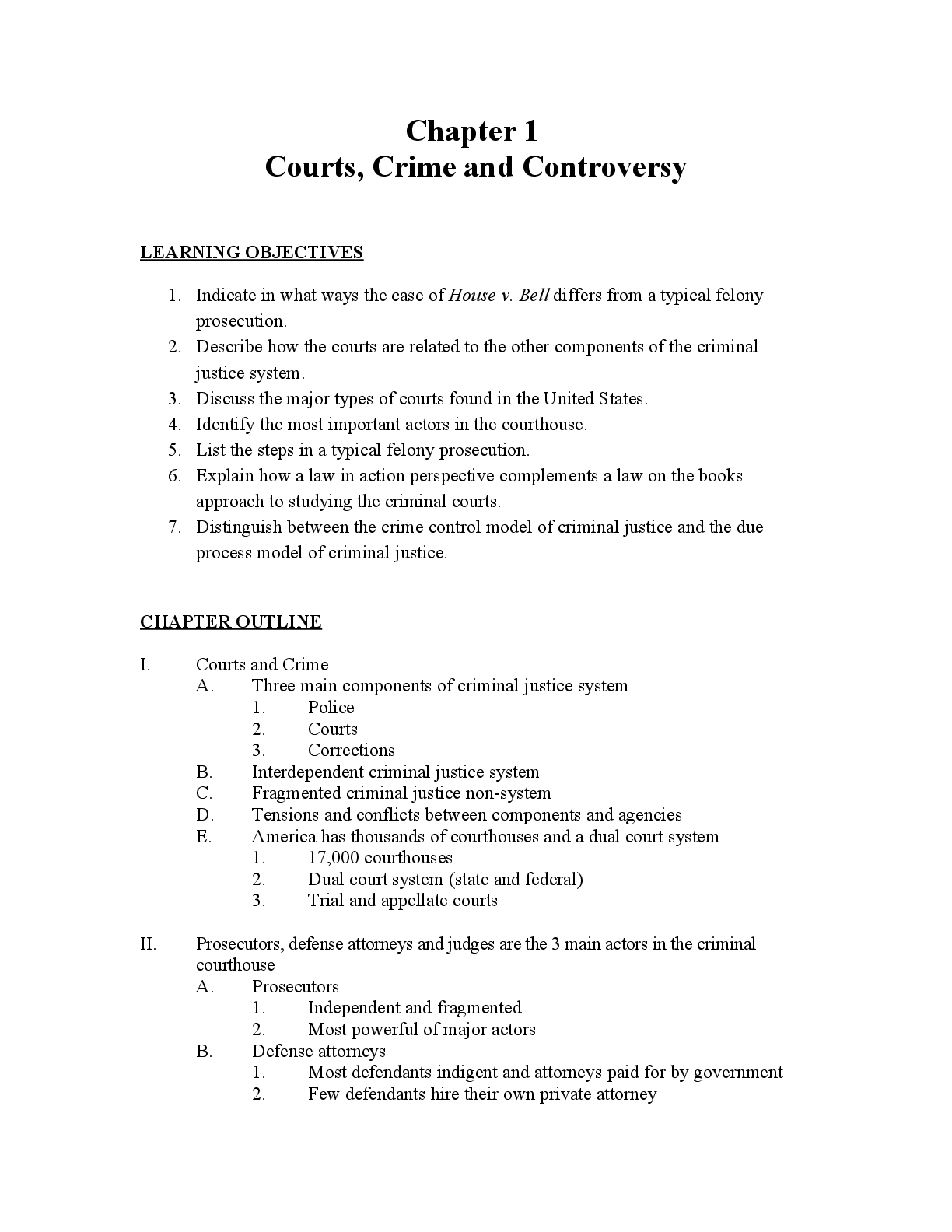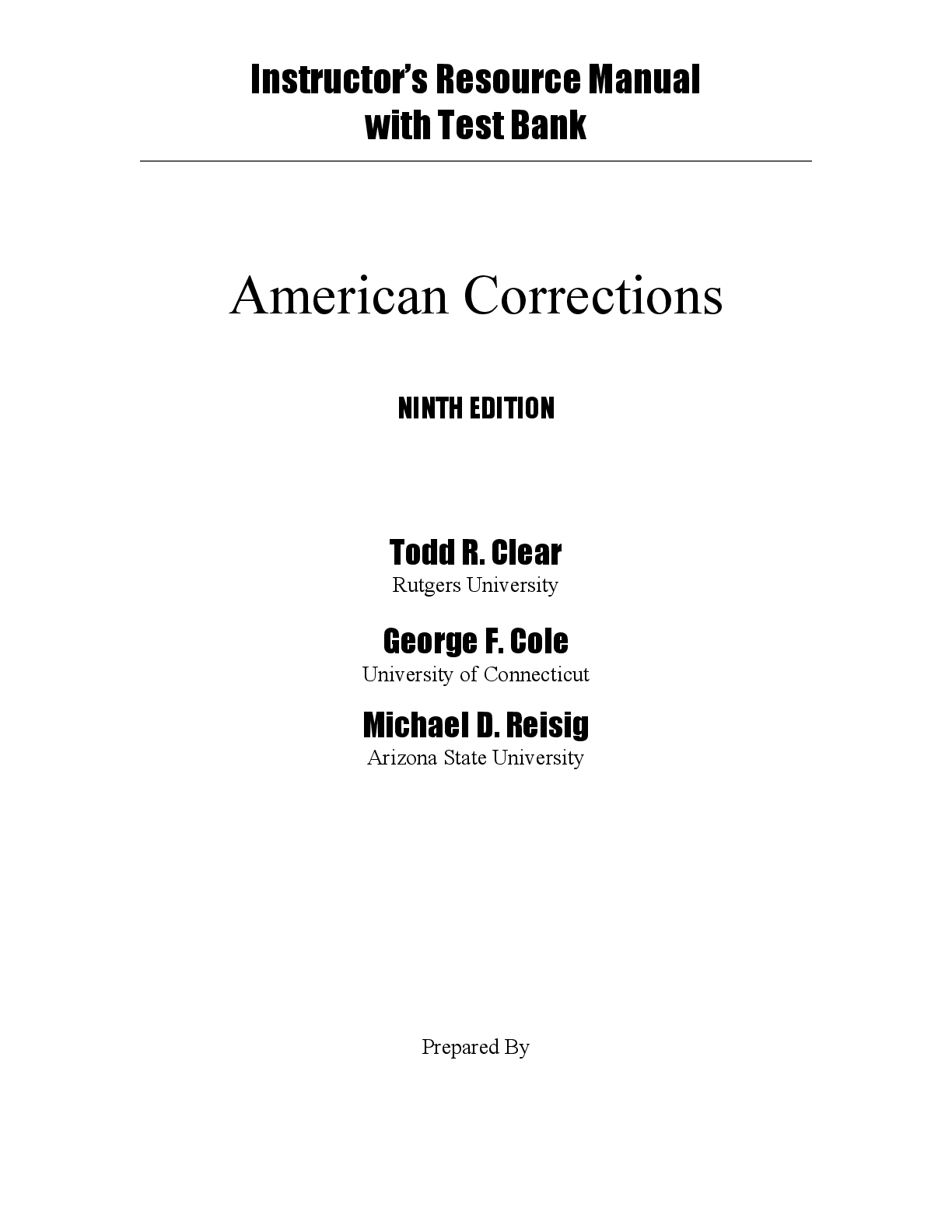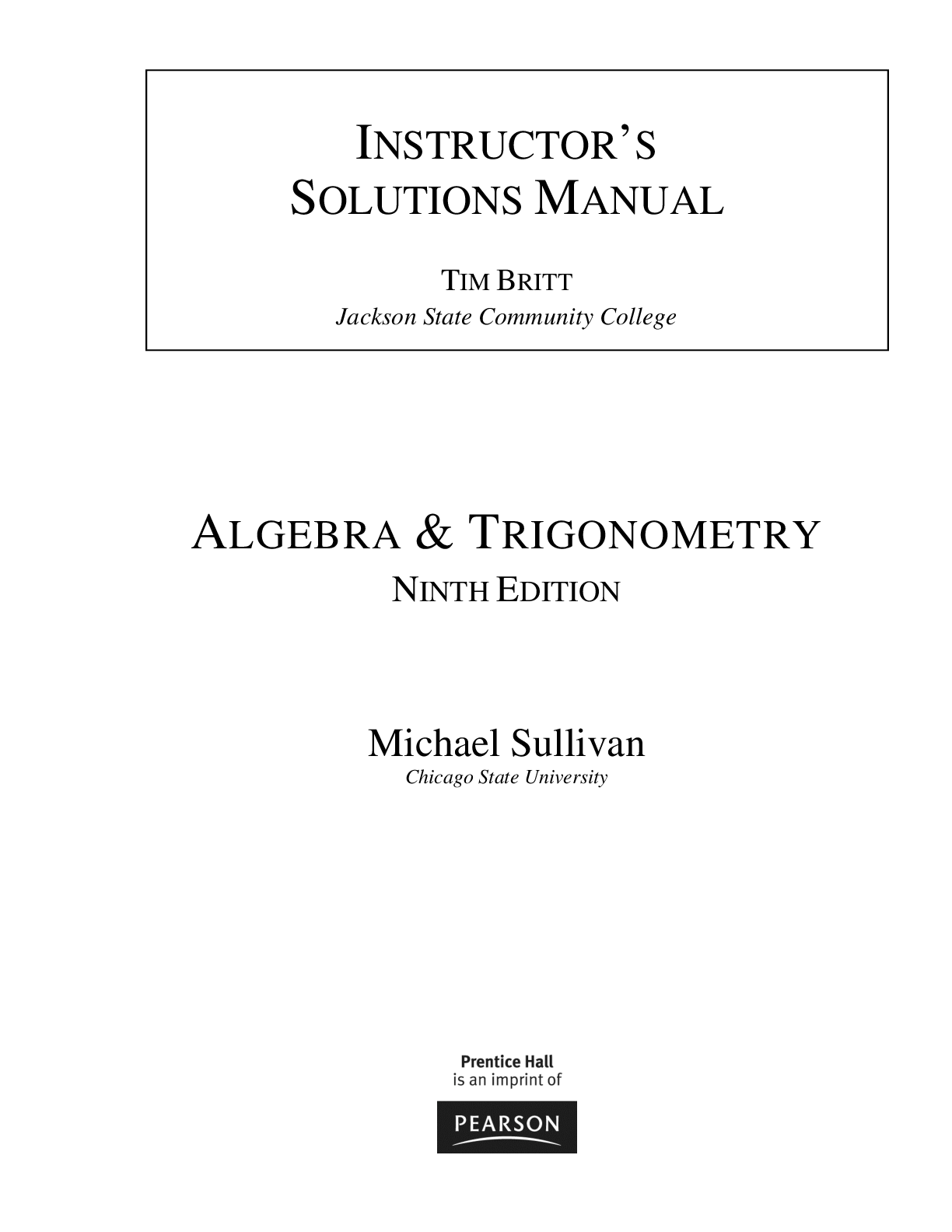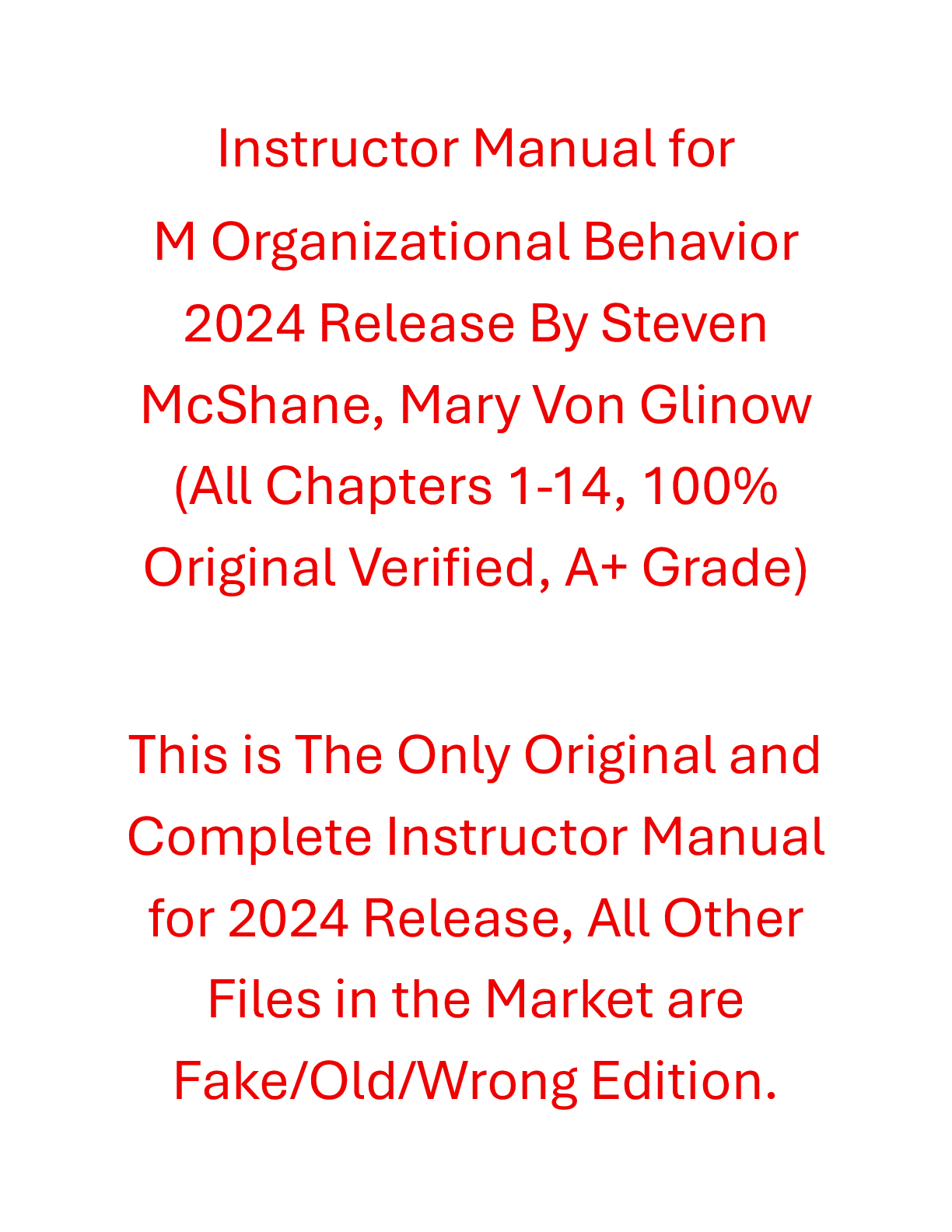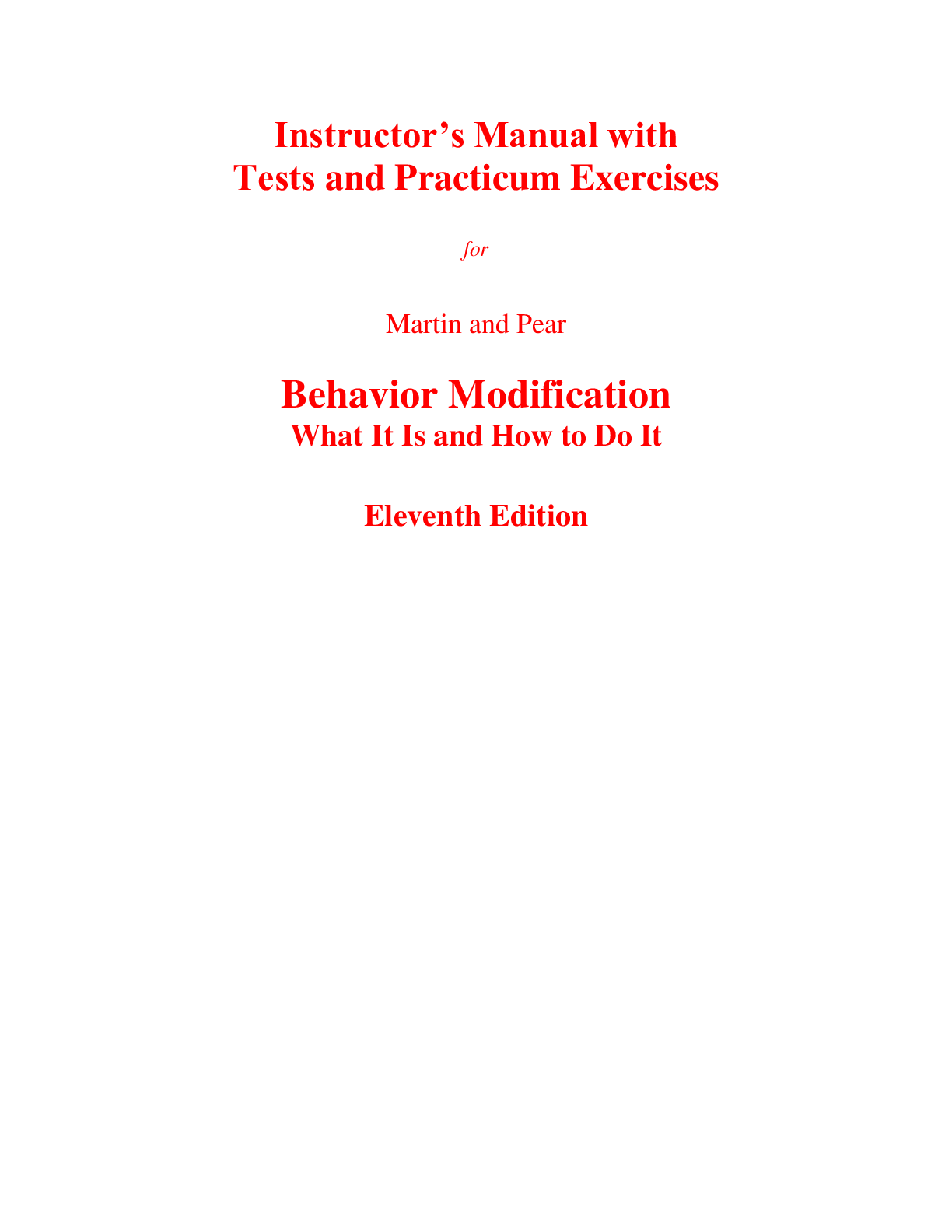Education > INSTRUCTOR MANUALS > Instructor Manual for Automotive Maintenance & Light Repair 3rd Edition Rob Thompson (All)
Instructor Manual for Automotive Maintenance & Light Repair 3rd Edition Rob Thompson
Document Content and Description Below
Instructor Manual for Automotive Maintenance & Light Repair 3rd Edition Rob Thompson-The purpose of this chapter is to introduce students to the automotive industry. First, a brief history is provide ... d of the evolution of automobile design and construction. Next, we focus on the numerous and diverse career opportunities available, along with the education and training required for those jobs. Finally, we discuss the requirements for ASE and manufacturer certification. [return to top] CHAPTEROVERVIEW This chapter introduces the types of jobs available in the automotive industry, the training and education required for automotive technicians, and the requirements for National Institute for Automotive Service Excellence (ASE) certification. How and why automotive design and construction have changed and continue to change and how this affects the job of an automotive technician are also discussed. [return to top] CHAPTEROBJECTIVES Upon completion and review of this chapter, the student should be able to: 01.01 Identify and describe the types of jobs available in the automotive industry. 01.02 Explain training and education options for technicians. 01.03 Explain the types of ASE certification. 01.04 Identify the requirements to become ASE certified. 01.05 Describe three reasons forthe changes in automotive design and construction. [return to top] Automotive Maintenance & Light Repair 3rd Edition Rob Thompson © 2024 Cengage. All Rights Reserved. May not be scanned, copied or duplicated, or posted to a publicly accessible website, in whole or in part. 3 READING ASSIGNMENTS Textbook, pages 1-13 [return to top] KEY TERMS ASE Education Foundation: An accredited and standardized training program ensuring that required documentation and competencies have been met. collision technician: Repairs a vehicle after it has been involved in a collision or has suffered some type of body or structural damage. entry-level technician: A beginning technician able to perform basic inspections and maintenance services. express technician: An entry-level technician who performs engine oil changes, tire rotations and repairs, and multipoint inspections. lifelong learning: Continuing to learn and acquire new skills as the industry changes. line technician: Certified in multiple areas and has experience with most of the systems on the vehicle. National Institute for Automotive Service Excellence (ASE): A testing and certification process providing customers with a way to recognize competent mechanics. parts technician: A person knowledgeable about the auto parts industry and helps find parts for the customer. service advisor: Specializes in communications between the customer and others in the shop using communication and sales skills. Is knowledgeable about vehicle systems, and often can perform some basic shop operations. [return to top] WHAT'S NEW IN THIS CHAPTER The following elements are improvements in this chapter from the previous edition: Updated key terms Updated objectives to current ASE MLR standards Increased Word Wall content Updated images and photographs Added information on job descriptions Expanded on post-secondary training Added information on ASE certifications Automotive Maintenance & Light Repair 3rd Edition Rob Thompson © 2024 Cengage. All Rights Reserved. May not be scanned, copied or duplicated, or posted to a publicly accessible website, in whole or in part. 4 [return to top] CHAPTEROUTLINE In the outline below, each element includes references (in parentheses) to related content. “CH.##” refers to the chapter objective; and “PPT Slide #” refers to the slide number in the PowerPoint deck for this chapter (provided in the PowerPoints section of the Instructor Resource Center). Introduce the chapter and review learning objectives for Chapter 1. (PPT Slides 1-3). I. Objectives Review the chapter’s objectives. (PPT Slides 2-3) II. The Automotive Industry (01.05, PPT Slide 4) A. Discuss the automotive industry as part of the larger domestic and international transportation industry and jobs associated with automobiles as part of a bigger picture encompassing all transportation-related jobs. Note that all transportation industries have changed because of the growth or loss of markets and changes in technology, laws, regulations, and the economy. Any transportation-related career requires the ability to adapt and grow as things change. B. Examine changes in the auto industry in the last 100 years. Describe how at the end of World War II, the American economy needed to change to consumer production. Factories that had been producing war supplies shifted to producing household goods and automobiles. Automotive companies restarted new car production in 1946. Returning veterans and their families needed housing and transportation as suburban areas grew. As more vehicles were sold and more road miles were traveled, more pollution was released into the atmosphere. Auto pollution created a thick, heavy haze over cities, called smog. The California government began to take steps to decrease the amount of pollution produced by cars and trucks. Passage of the Clean Air Act, Clean Water Act, and many more emission control laws have forced vehicle manufacturers to meet increasingly strict exhaust emission standards. C. Explain how the economy and fuel prices during the energy crisis of the 1970s caused a shift in consumer attitudes toward the cars the domestic auto makers produced. New standards required auto makers to reach increasingly higher fuel economy ratings across all their vehicles sold in the United States. D. Detail how the market share of foreign and domestic vehicles shifted. Imported cars had a small percentage of the total automotive market share before the mid-1970s. When oil and gas prices rose, many car buyers started to look at the small, fuel-efficient models offered by Honda, Toyota, Datsun (later Nissan), VW, and others. In 1970, Americans bought about 313,000 Japanese-manufactured vehicles and approximately 750,000 vehicles from Germany. In comparison, sales by General Motors, Ford, and Chrysler exceeded more than 85% of the market. In 2015, sales of imported cars in the United States accounted for about 55% of total sales. E. Describe the electronic revolution and how the production of smaller and less expensive electronic components could be supplied at a lower cost. Features such as power door locks, rear window defoggers, and air conditioning, once expensive options, are standard [Show More]
Last updated: 1 year ago
Preview 5 out of 265 pages

Loading document previews ...
Buy this document to get the full access instantly
Instant Download Access after purchase
Buy NowInstant download
We Accept:

Reviews( 0 )
$16.50
Can't find what you want? Try our AI powered Search
Document information
Connected school, study & course
About the document
Uploaded On
Dec 02, 2024
Number of pages
265
Written in
All
Additional information
This document has been written for:
Uploaded
Dec 02, 2024
Downloads
0
Views
47


